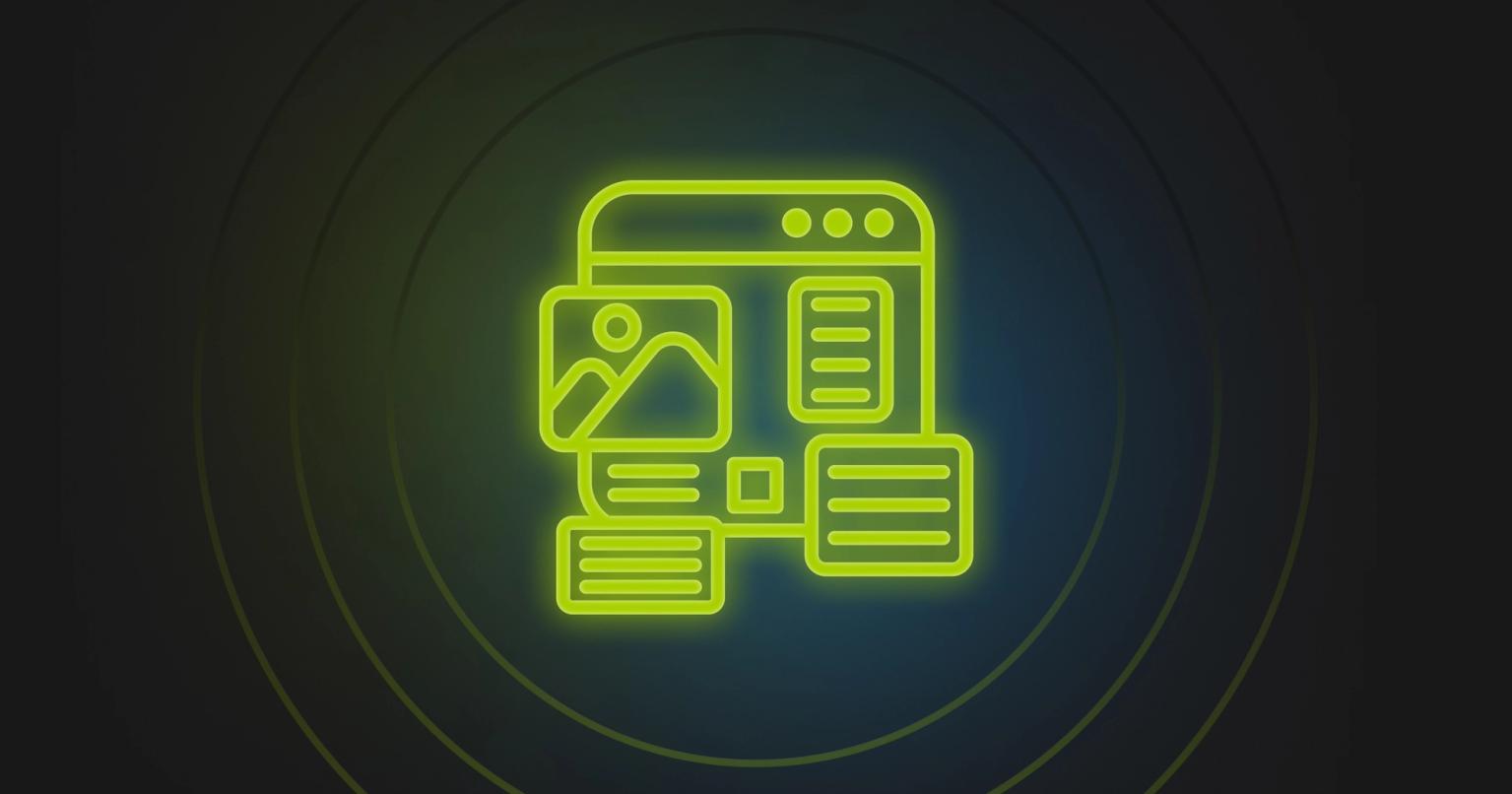Using AI Segmentation for Email Personalization

Summary
Learn how AI segmentation helps marketers personalize emails at scale, increasing engagement and driving better results.
The days of email batch blasts could well be over. The signal-to-noise ratio in email marketing has shifted, making personalization essential. The classic batch and blast strategies of the past, where you would load up a single email and send it to all your subscribers, has thankfully passed.
In its place, we're seeing trends toward personalization and utilizing AI tools to help hyper-personalize content to be targeted, relevant, and valuable. AI capabilities bring a whole suite of new tools to digital marketers. The ability to create content that is hyper-personalized based on individual data and preferences is unmatched.
Personalization strategies are effective. The American Marketing Association found that emails that are personalized are 26% more likely to be opened. However, the main barriers to using personalization and segmentation in email marketing are resources and budgets, with marketers citing access to these as a limiting factor.
The traditional limitations for segmentation—such as scaling, data management, and applying marketing intelligence—are all dramatically improved with the usage of AI tools. Let's dive a little deeper into this.
Understanding AI Segmentation: The Foundation of Modern Email Personalization
AI segmentation works a little differently than conventional segmentation methods. Conventional segmentation methods rely on marketing operations professionals to apply and build segments within their marketing automation, CRM or CDP.
AI segmentation is a way of applying AI and ML elements to your database to provide segmentation. AI can quickly identify patterns in the data and then apply robust segmentations. While the output may not look all that different—creating distinct segmentations—the impact is noticeable. AI can assign segmentations at a niche level and then apply those to personalization campaigns.
The four main components of AI-driven segmentation are data collection, analysis, segmentation, and personalization.
At the data collection stage, you have the opportunity to augment your data with AI insights. For instance, being able to look at customer behavior on your website or your Ecom store and use that to infer information that just wouldn't be possible using a more manual approach.
The analysis of this data can also be correlated to other factors, purchase behavior trends, sales engagement, and other interactions with your brand. Applying the segmentation then is codifying the findings of that data analysis and providing named segments for each distinct group that you discover.
Lastly, applying personalization is about matching the segmentation against a marketing message. This is the most challenging component of modern email personalization. Knowing what your segments are is half the battle, but the other half is knowing how to speak to that segment—what's effective and what will drive positive outcomes for your business.
AI can help here by rapidly scaling content creation efforts, providing tweaks or wholesale changes to emails to be able to hyper-personalize those. AI algorithms can help to identify patterns and behaviors that would be simply impossible to detect manually. Leveraging this is a key component of your AI segmentation strategy.
Types of AI-Powered Email Segmentation Strategies
Let's take a closer look at the types of AI powered email segmentation strategies"
- Demographic segmentation
- Behavioral segmentation
- Predictive segmentation
- Customer lifecycle segmentation
Demographic Segmentation
Demographic segmentation uses AI to extract and analyze customer attributes based on basic information. Data points like geography, seniority, role, industry all help to create a picture of the customer that you're working with and their demographic qualities.
This data is highly contingent on what you can collect, perhaps through forms, or what you can augment and enhance, perhaps through a third party data enhancement platform. This data should live in your marketing automation or CRM platform and be relatively straightforward to access and to use with AI.
Behavioral Segmentation
The interactions and behaviors your customers take, be it through their purchase history, browsing activity, or application engagement, all help to paint a picture of their persona. Identifying patterns through these interactions, however, can be really challenging in traditional segmentation strategies.
Setting up multiple triggers and listeners to be able to key off of critical events can become challenging. AI has the ability to scale this up by taking a look at not only your standard events, but being able to ingest much more data to be able to identify anomalies and outliers, as well as patterns that humans struggle to see.
This type of behavioral segmentation can be used for personalizing outreach emails, for instance, offering free shipping on offers where you know that the customer is sensitive to this type of offer.
Predictive Segmentation
The ability to forecast future customer actions, in effect, have a crystal ball into what prospects will do, is a capability that all marketers dream of. With machine learning and AI algorithms, it becomes much more likely to be able to set up models where you could, with some degree of accuracy, forecast future customer actions and preferences to create proactive campaigns.
AI can already be used to pick up on certain behaviors and then be able to forecast on that to set up predictive segments. It does require a robust data set behind the scenes of past behavior and analysis so that you can make educated predictions.
Customer Lifecycle Segmentation
Customizing your content to meet your customers where they are is a key segmentation strategy. How you talk to new prospects versus a marketing qualified lead versus an opportunity in the sales pipeline are necessarily different.
Making sure to have content that's tailored for their specific point in their journey, perhaps addressing common pain points that arise or questions, for instance, somebody at the MQL stage may be interested in learning more about the technical details of your product, and so providing that information with them is key.
Building a Strong Foundation: Data Quality and Management for AI Segmentation
When it comes to working with artificial intelligence, one of the most common things that we have to watch out for is hallucinations and implicit bias. This puts an emphasis on having clean, accurate data. Your AI performance depends on accuracy and cleanliness of data. Without that, the AI is likely to, quote unquote, fill in the blanks and we don't want that. We would rather have incomplete data than hallucinated and incorrect data.
One of the fascinating developments in marketing technology is the rise of customer data platforms (CDPs). CDPs provide a unified view of customer information, acting as a repository to bring in data from multiple different systems in order to create a system of record.
The CDP methodology definitely applies to what we're thinking about with AI segmentation. We don't want to just segment a small slice of the data. We want to have a holistic view of the entire picture. By bringing in multiple variables into a single platform via CDP or a database, we have the ability to train the AI on complete data sets and then provide it with a holistic view of your customer information.
From a data collection point of view, we want to be thinking about both first party and third party data sources to create rich customer profiles. What information can you collect on your website? Through surveys, through direct customer interactions versus the information that comes from third party data sources such as social media, scraping data augmentation platforms and so on.
Above all, we want to think about complying with data privacy regulations while maximizing the utility of this data. By having a strong data foundation, we have the ability to build quality as a feature of AI segmentation and not have to fight with bugs like hallucination and missing information.
Implementing AI Segmentation in Your Email Marketing Strategy
Chances are you already have segmentation strategies at play with your email marketing. So layering in AI is really an addition to these types of tasks.
I recommend a crawl, walk, run type approach. To start with, make sure that you have clear objectives for your AI segmentation initiatives. If you're applying segmentations to your subscriber list, how will you use those segmentations?
Applying segmentations is really about matching the content to the intent of the segment member. Are you going to use segmentation for email subject lines? Are you going to design customized modules or are you going to create triggered emails based on behavioral indicators?
Having a clear idea of what AI tools to integrate with your existing Martech stack is a solid next step. This allows you to set up data privacy and compliance at the get-go, making sure that whatever system you use adheres to the compliance practices you already follow. Then you can tackle how to integrate it with your existing Martech stack.
Using automation tools like Clay or Zapier to run personalization? Are you doing it on a more manual basis? The answers to those types of questions may change as you progress and mature in your approach.
I think a solid first step is to create a workflow that helps to balance automated processes with human oversight. Create a template email and an automation workflow, and then use human oversight to monitor that. Start with a small list size, something that you're confident will be effective. And test it, see what happens.
Having a testing, optimization, and measurement strategy in place is critical to ensure that you continuously improve your segmentation strategy's effectiveness. Can you measure and detect differences in your open rates or conversion rates? Answering this question will help to justify further investments in your AI segmentation strategy and provide tweaks to how you approach this in the future.
Dynamic Content and AI-Powered Segmentation
When we're thinking about using AI and segmentation in email marketing, we have to think about having a design system that works with this. This is where modular email design comes in. Having a modular email template design system allows you to have various containers within the email that can then be purpose built and used by AI to offer customizations based on the segmentation.
For instance, you may have standardized sections within your email, like your footer or the hero image, that always look the same. But then you may have a section that is dynamically populated based entirely on the segmentation. For instance, if you're an ecommerce company sending promotional emails, you may have a section that is purpose built for AI segmentation to provide product recommendations based on their purchase history, behavioral information or predictive analytics.
AI can be used to determine which content elements resonate with the different segments. Modular emails, then provide the structured framework for displaying that. Tools like Knak help to create dynamic, brand compliant emails without requiring you to develop the code yourself. This works extremely well when we're thinking about an AI powered segmentation strategy.
You want to have ready made templates that are responsive, brand compliant and work with your marketing automation system, while also having the ability to slot in content generated by artificial intelligence based on your segmentation.
The Future of AI in Email Personalization
The power of AI-powered segmentation extends far beyond simply sorting subscribers into categories. It represents a fundamental shift in how marketers can connect with audiences on a deeply personal level.
What makes this technology particularly exciting is its ability to evolve. Today's AI segmentation capabilities are just the beginning. As machine learning algorithms become more sophisticated and data sets grow richer, we'll see even greater precision in predicting customer needs and preferences. The future lies in moving beyond segmentation to true 1:1 personalization at scale—where each recipient receives content that feels crafted specifically for them.
This evolution will extend beyond email to create cohesive, personalized experiences across all marketing channels. Imagine the power of consistent, AI-optimized messaging that adapts seamlessly between email, landing pages, social media, and even direct mail—all working together to deliver the right message at the right time.
To prepare for this next generation of AI-powered marketing, focus first on building a strong foundation. Invest in clean, comprehensive data collection. Develop modular content frameworks that can flex with personalization needs. And choose tools that empower your team to execute sophisticated strategies without technical limitations.
Tools like Knak help bridge this gap by enabling marketers to create beautiful, responsive emails and landing pages without coding knowledge—providing the canvas upon which AI can paint personalized experiences. When powerful AI segmentation meets flexible content creation capabilities, marketers can finally deliver on the promise of truly personalized communication that cuts through inbox clutter and delivers meaningful value to every recipient.
The future of email isn't just personalized—it's predictive, adaptive, and infinitely more effective. By embracing AI segmentation today, you're laying the groundwork for marketing experiences that will continue to evolve with every interaction.












